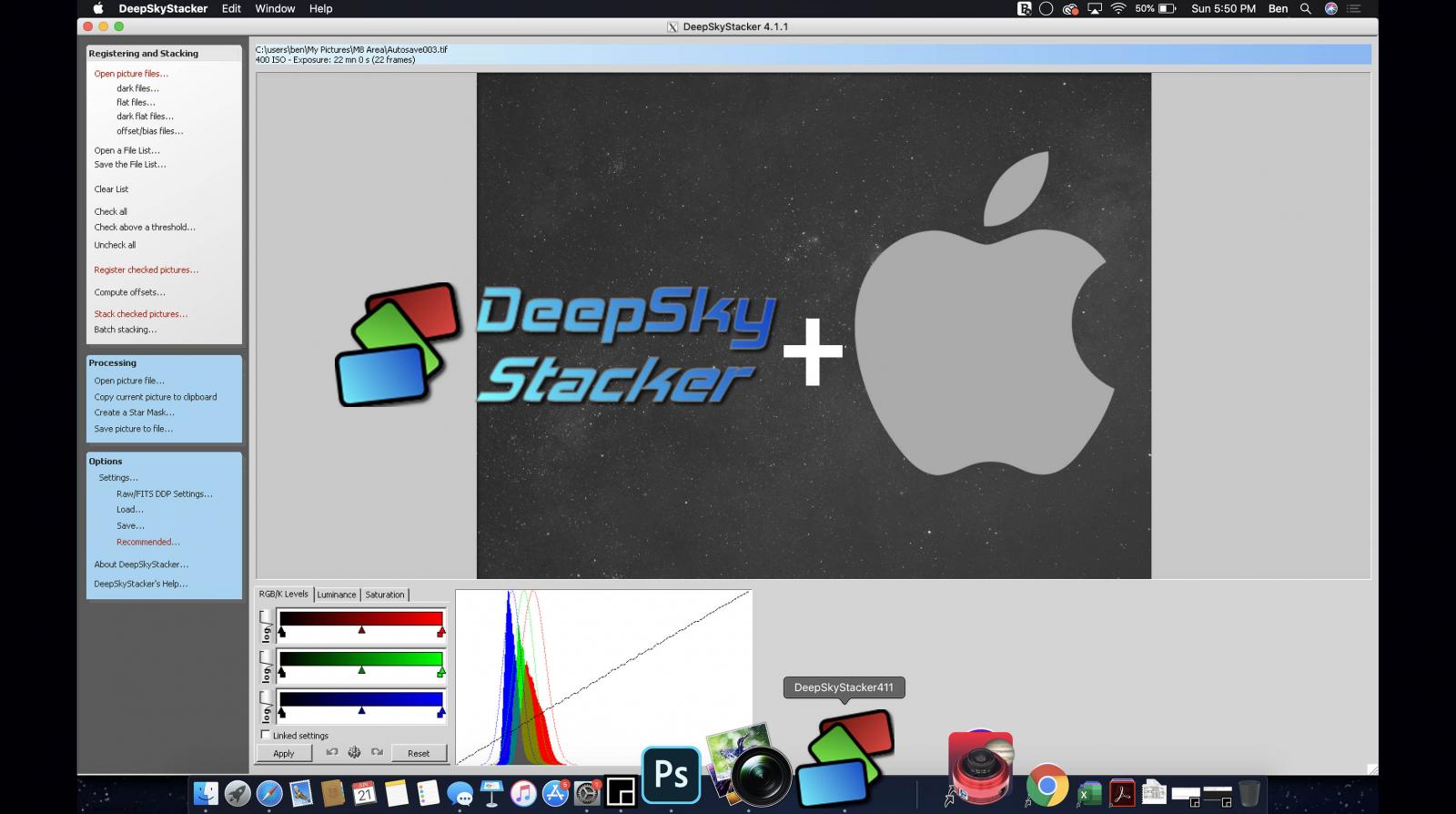Rhythm Stacker Mac OS
Recommendations for your start in imaging on the Mac
A free open-source circle-clicking rhythm game client for osu! Beatmaps, with the main focus on making practicing easier and customizing gameplay. It is primarily a practice client for getting better at the 'official' game by having tools at your disposal that osu! Does not provide for some reason, it's not supposed to be a perfect copy of osu. Zerene Stacker is designed for deep stacks. There is no intrinsic limit on stack depth. Many of our users routinely go over 100 images per stack; the biggest ones we know about are over 1000. Zerene Stacker can handle any modern camera we know of. Some of our users regularly process 200 megapixels per frame, from high-end Hasselblad cameras. 22:39 어서와 한국은 처음이지 시즌2.E156.210429.450p-NICE 22:30 킹덤 레전더리 워 E05.2p.WEB-DL.x264.AAC-Deresisi 22:27 썰바이벌.E12.210429.450p-NICE 22:27 어서와 한국은 처음이지 시즌2.E156.210429.720p-NEXT 22:27 어서와 한국은 처음이지 시즌2(영국 제임스 후퍼, 산악인 엄홍길).E156.210429.720p-NEXT. Find Rhythm games for macOS like Friday Night Funkin', Friday Night Funkin' (Ludum Dare Prototype), Audio Runner, A Dance of Fire and Ice, Lo-Fi Room on itch.io, the indie game hosting marketplace. Get more done with the new Google Chrome. A more simple, secure, and faster web browser than ever, with Google’s smarts built-in.
Rhythm Stacker Mac Os Catalina
There's a few things that need to be covered here as a starting point. I make some assumptions that you’re familiar with Astronomy, possibly already have a first telescope, and are ready to start taking some images. First you have to make a decision as to whether you want to take photos of the planets and Moon, or if you want to take photos of nebula, star clusters, or galaxies. Basically, the decision between planetary, or deep space objects. These things are not exclusive to each other, and can be done with the same telescope but the results might not be optimal for each choice. Your telescope is probably suited to one or the other. (Edit: If you’re just getting into the hobby, have a look at this article on 5 things to consider if you’re interested in astrophotography.)
Planetary imaging on the Mac
Planetary is fairly straight forward. Large aperture scopes like 6' and above are great for this, and you don't need to have an equatorial mount. Any Alt/Az (Altitude Azimuth) mount will work. A high speed web cam or astro camera and Mac laptop are the only additional entry level hardware requirements. Since most planets are relatively small, the larger the scope, the closer/larger they will look, and the more detail you can get out of your images.
Recommended starting software for planetary imaging:
OACapture - for taking pictures or videos: free
SiriL - for stacking planetary images: free
PixInsight - for processing your planetary images to get the most detail out of them: $230 EUR
Unfortunately planetary processing software is a gap right now on the Mac. You need wavelet processing to get the most detail out of your images, and currently PixInsight is the only real option. There are two other apps that might run on older hardware and operating systems (Lynkeos and Keiths Image stacker), but they're not developed any longer, and crash often on modern hardware. They are however, free applications.

For more advanced options, you might switch out Planetary Imager for FireCapture.
Deep sky object imaging on the Mac
DSO imaging requires a little more effort. Because this type of imaging focuses on long exposure shots, where tracking your object across the sky accurately is a requirement, you'll need a German Equatorial Mount (GEM). These deep sky objects can vary greatly in size, with a large number of them being bigger than earth's moon in the night sky. Because of this, a large scope isn't a requirement to get started. In fact, it's preferable to start with a smaller scope, like an 80mm refractor. The reason for this is that the larger your scope, the more accurate your tracking needs to be, the better your mount needs to be to handle the weight and accuracy. The difficulty (and cost) goes up exponentially with larger telescopes. So start small. All of the telescopes I use are relatively small (under 6' in size), and all fit on my entry level GEM mount, the Advanced VX by Celestron.
Additional requirements are going to be a guiding camera and guide scope. This is essentially a small telescope mounted on top of your main scope, with a guide camera. This camera's job is to watch the star movement, and send corrections to your GEM mount when the mount isn't moving accurately. For entry level equipment, this is a necessity, as these mounts are far from accurate for long exposure imaging.
You'll also need a main imaging camera, and your options vary widely here. You have the option of using a DSLR (maybe you have one already in your possession), or a dedicated astrophotography camera that can do color or mono. Mono is a black and white camera, that when combined with color filters, can achieve a higher fidelity color image than a regular color camera can but with more effort and expense.
Recommended starting software for deep sky imaging:
Rhythm Stacker Mac Os Catalina
Cloudmakers Astro Imager - for taking pictures with an astronomy camera: $21.99
Cloudmakers AstroDSLR - for taking pictures with a DSLR camera: $21.99
PHD2 - Guiding software for your guide scope and camera: Free
Astro Pixel Processor - Processing software for your images. $50/year, or $125 to purchase outright.
Mac Os Download
For more advanced options you might switch out Astro Imager for EKOS. And Astro Pixel Processor for PixInsight, or Star Tools.